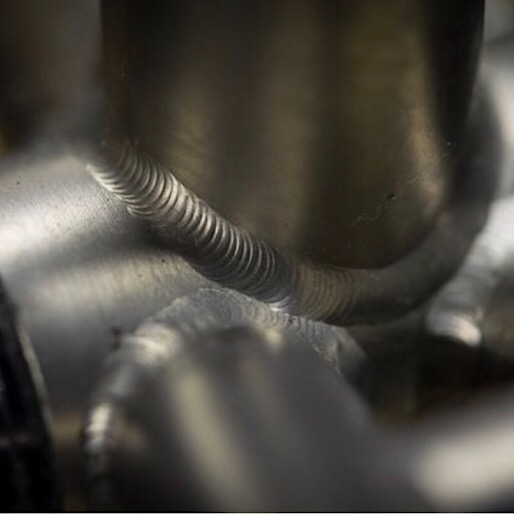...whether there is a method to the application of these 3 different joining techniques. I get that 531 becomes weaker when heated and so cannot really be welded, hence the brazing.
But why would someone choose to join 853 tubes with lugs? Cosmetically, I think a nice lugged frame looks fantastic, but I'd guess the extra metal in the lugs will go some way to offset the lighter weight of the 853 tubes compared to Cr Mo. Does using lugs allow for a better butting profile (or no butting at all?).
531 can be welded, but is absolutely not recommended, due to its manganese content of its Cro-Mn steel alloy...best not melt the steel (1400C) as the Manganese will have boiled off first (1246C)...nasty, see '
manganism'. Also, it's prone to cooling cracks in the weldment.
853 was partly developed to address these safety issues of welding Cro-Mn steels (531/653/753 etc) and provide an alternative to the available 4130 Cro-Mo based tubes (Tange/True Temper/ Ishiwata/ low-end Columbus) that could already be safely welded. Also to compete against the excellent quality weldable Columbus Nivacrom (Niobium-Vanadium-Chromium) steels that dominated the high end market at the time.
853 needs to be heated over 850Cish to gain the extra yield strength from air hardening, and so should always be welded, brass fillet brazed or fitted with lugs using brass/bronze to get the most out of the material. The normal 80s-90s practice of silver brazing lugs below 650C to preserve the steel qualities (such as was required in 753) is not required or recommended with the newer Reynolds air hardening steels (953/631/853). Other current Reynolds tubesets (725/525/520) are now based on Cro-Mo, so can be welded safely, and brazed without such great care for temperature control.
Lugs require longer butts than TIG welding, as the stressed areas are further from the joint and more concentrated than with welding.
Lugs, especially modern un-thinned cast cro-mo ones, can give higher stress risers at their edges (up to 3:1 ratio) than the smoother profile of fillet brazing or TIG, so should usually be built with tubes which have thicker butts. Thanks to CEN rules, this is normal practice now.
Fillet brazing involves far longer heat cycles than welding or lugs, so can lead to overheating or larger heat affected zone (HAZ). Again, should be used only on frames with thicker butts.
Columbus used to produce some of their higher end 90s tube sets (EL/Life/Genius/Nemo/Neuron/Brain etc) in long and short butt profiles (as well as A, B and C size ranges) specifically to take advantage of the shorter HAZ and small fillet of TIG. However, the weight saving in the tubing itself amounted to only 20-60g on a Nemo road frame, plus the weight of a lugset (perhaps 120g).
These days, butt length is generally dictated by the overall tube length and how much is trimmed from the ends. Hence the requirement for
a butt checker.
I think the popularity of 853 with lugs is more to do with the steel bike market and likely builders and customers for 853 frames. Mass production houses tend to have gone over to carbon at the price range dictated by the cost of 853 tubing and above. Customers willing to pay for a custom steel frame tend to be looking for 'craft' and handwork these days, rather than the clinical efficiency of TIG welding.
IMO it is also easier, quicker and safer for a small craft builder to get started making presentable lugged steel frames than fillet brazed ones. The equipment, training, practice and prep expense of TIG welding is far higher than oxy-acetylene start-up costs.
Going the next step up to building with 631/953 stainless tubes requires a big investment in tube prep, cleanliness and purging set-up (along the same lines as Ti) to be safe and efficient, so 853 remains the tube of choice of the small craft builder.
PS: I'm a 753 certified former steel frame builder (lugged and fillet) who has spent the last 20 yrs TIG welding aluminium, so I swing both ways...

All the best,

